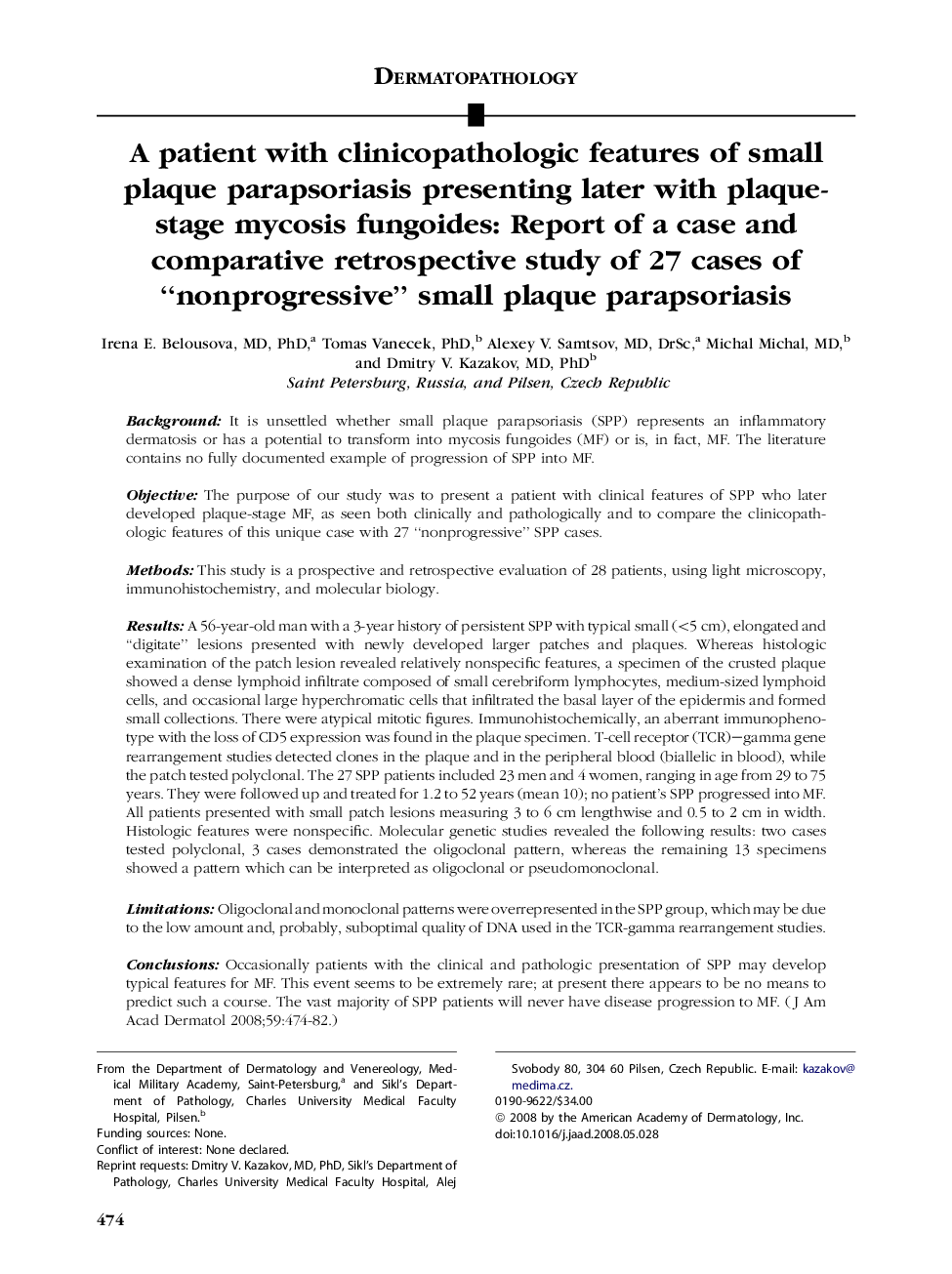| کد مقاله | کد نشریه | سال انتشار | مقاله انگلیسی | نسخه تمام متن |
|---|---|---|---|---|
| 3210399 | 1587619 | 2008 | 9 صفحه PDF | دانلود رایگان |

BackgroundIt is unsettled whether small plaque parapsoriasis (SPP) represents an inflammatory dermatosis or has a potential to transform into mycosis fungoides (MF) or is, in fact, MF. The literature contains no fully documented example of progression of SPP into MF.ObjectiveThe purpose of our study was to present a patient with clinical features of SPP who later developed plaque-stage MF, as seen both clinically and pathologically and to compare the clinicopathologic features of this unique case with 27 “nonprogressive” SPP cases.MethodsThis study is a prospective and retrospective evaluation of 28 patients, using light microscopy, immunohistochemistry, and molecular biology.ResultsA 56-year-old man with a 3-year history of persistent SPP with typical small (<5 cm), elongated and “digitate” lesions presented with newly developed larger patches and plaques. Whereas histologic examination of the patch lesion revealed relatively nonspecific features, a specimen of the crusted plaque showed a dense lymphoid infiltrate composed of small cerebriform lymphocytes, medium-sized lymphoid cells, and occasional large hyperchromatic cells that infiltrated the basal layer of the epidermis and formed small collections. There were atypical mitotic figures. Immunohistochemically, an aberrant immunophenotype with the loss of CD5 expression was found in the plaque specimen. T-cell receptor (TCR)–gamma gene rearrangement studies detected clones in the plaque and in the peripheral blood (biallelic in blood), while the patch tested polyclonal. The 27 SPP patients included 23 men and 4 women, ranging in age from 29 to 75 years. They were followed up and treated for 1.2 to 52 years (mean 10); no patient's SPP progressed into MF. All patients presented with small patch lesions measuring 3 to 6 cm lengthwise and 0.5 to 2 cm in width. Histologic features were nonspecific. Molecular genetic studies revealed the following results: two cases tested polyclonal, 3 cases demonstrated the oligoclonal pattern, whereas the remaining 13 specimens showed a pattern which can be interpreted as oligoclonal or pseudomonoclonal.LimitationsOligoclonal and monoclonal patterns were overrepresented in the SPP group, which may be due to the low amount and, probably, suboptimal quality of DNA used in the TCR-gamma rearrangement studies.ConclusionsOccasionally patients with the clinical and pathologic presentation of SPP may develop typical features for MF. This event seems to be extremely rare; at present there appears to be no means to predict such a course. The vast majority of SPP patients will never have disease progression to MF.
Journal: Journal of the American Academy of Dermatology - Volume 59, Issue 3, September 2008, Pages 474–482